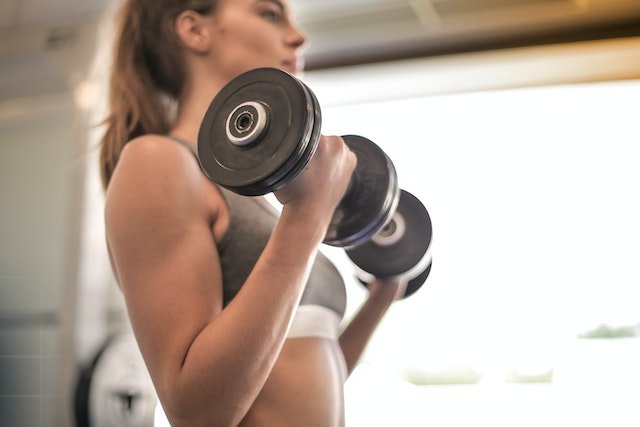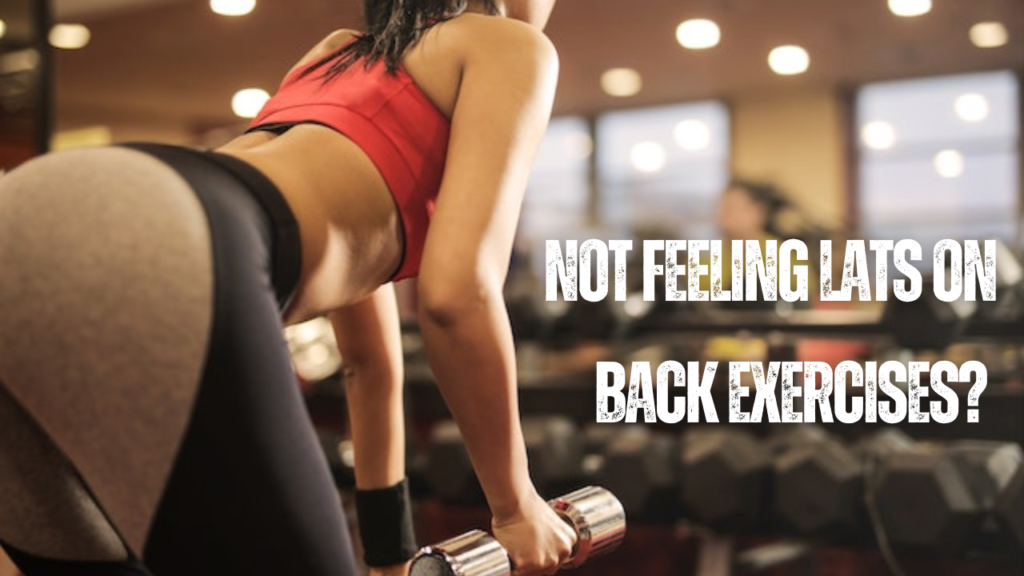
Why Can I Not Feel My Biceps While Doing Bicep Curls? Answers Here
Are you someone who has been working hard on their arm strength and doing bicep curls regularly, but still can’t seem to get the results they’re looking for?
If that’s the case, don’t worry – you are not alone. Feeling frustrated because of not being able to ‘feel’ your biceps in action can be a common issue for people trying to build muscles at home or the gym.
In this blog post, we’ll discuss some of the reasons why you don’t feel your biceps while performing a curl and what steps you can take to work towards developing strong arms.
Why can’t I feel my biceps while doing bicep curls?
There are a few common mistakes many make when doing bicep curls, which can prevent you from feeling your biceps working. The two most common issues people face are…trying to lift a weight that’s too heavy or their form needs work. Some of the most common mistakes include swinging weights, leaning too much, flaring your elbows outwards, having too much wrist flexion, rushing without control and gripping the weight too tightly. All of these can prevent you from getting good muscle contraction and also cause you to not fully utilize your range of motion. In order to make sure you are getting the most out of your curls, it is important to focus on proper form. Rotating your wrists as you curl will help you target different areas of the muscle and slow down the eccentric phase can also be beneficial for activating more fibres in the biceps. Additionally, trying some isolation exercises such as preacher curls can help further target the bicep. It is also important to remember that building muscle takes time and patience. Increasing the volume of your curls, as well as trying out variations such as unilateral curls, can help you advance in your strength-training goals. Additionally, sitting down or leaning against a wall while curling can help keep your form in check and help you focus on the mind-muscle connection. If you are new to strength training, it is important to take your time and develop good form and technique before progressing to heavier weights. With consistent practice, patience and dedication, you’ll soon be able to feel your biceps working in no time.
Are you tired of not feeling your bicep curls? Put the following tips into practice and it won’t be long before those toned muscles of yours are working up a sweat!
Form
It’s crucial to focus on proper form when doing bicep curls, as this is where a lot of people get it wrong. The bicep curl is a relatively simple exercise in principle, but in reality, it’s a different story.
To maximize the benefits of this exercise, be sure to curl the weight by only bending at the elbow joint. Move slowly and keep your elbows close to your body while maintaining straight wrists for proper alignment throughout the workout.
As you get to the top of the movement, squeeze your biceps for a few seconds and then slowly move back down. This will help you engage as many muscle fibres as possible, leading to better results.
Then lower the weight all the way back down in a controlled manner. This will help you maximize the range of motion and ensure that your muscles are properly activated.
There are quite a few ways to do this exercise wrong and below are a few examples…
Swinging the weight
This is arguably one of the most common mistakes when it comes to bicep curls. When people are unable to control the weight, they often start swinging their arms in an attempt to perform the movement faster or with more resistance.
However, this puts a lot of strain on your joints and reduces the effectiveness of the exercise overall. It can also lead to injury if you don’t have the proper form and technique.
By swinging your arms, you aren’t contracting the muscles as much, which means you won’t be able to feel the desired contraction in your biceps.
By swinging the weight, you are putting more strain on your shoulders and back rather than your biceps, thus reducing the effectiveness of the exercise.
Elbows
Another mistake people make when doing bicep curls is flaring their elbows outwards instead of keeping them close to their bodies. This takes all the tension away from the biceps and puts it on the shoulder muscles, which defeats the purpose of the exercise.
It’s important to remember to keep your elbows close to your body throughout the entire movement, as this will help you engage more muscle fibres and feel a better contraction in the biceps.
The other elbow issue to contend with is when they point forwards as the weight is curled. This is normally due to the weight being too heavy and your body is doing its best to get the job done.
To ensure the biceps are engaged and working effectively, the elbows should point at the sides rather than forwards throughout the motion. Remember, the only movement in this exercise is in your forearms curling the weight.

Wrist flexion
Having too much wrist flexion can put unnecessary strain on your wrists and reduce the effectiveness of the exercise.
To ensure that you get the most out of your bicep curls, keep your wrists straight (neutral) and focus on curling the weight with only your forearms while maintaining a firm grip on the bar.
If you are curling the weight from your wrists, not only are your forearms working harder than they need to be, but you may also burn them and your wrists out before completing the desired number of sets, plus you could cause yourself a needless injury.
This is another indication that the weight you are trying to curl is too heavy for you. One way to check you are keeping your wrists neutral is to record yourself or watch your form in the mirror as you do the exercise.
Leaning
Leaning too much when doing bicep curls is another mistake many people make. When you lean forward, the tension shifts away from your biceps and onto your lower back muscles instead. This defeats the purpose of the exercise, as your goal is to feel and strengthen your biceps.
To ensure that you stay upright throughout the exercise, keep your core engaged and your spine straight. This will help you activate the correct muscles while doing bicep curls.
The same applies if you are leaning too far back. Doing so will shift the tension away from your biceps and onto other muscle groups, which again defeats the purpose of this exercise and is yet another indication that the weight you are trying to lift is too heavy.
Another thing to keep in mind is to make sure you don’t lock out your elbows when you reach the top of the curl. Keeping a slight bend at the elbow helps to ensure that all of the tension stays in the biceps and that you are engaging the muscle correctly.
Gripping issues
Gripping the weight too tightly can also be an issue. When you grip a weight too hard, it prevents your muscles from getting as much of a contraction as they would if you used a lighter grip.
If you grip onto anything too hard for too long, you are going to burn out and fatigue the muscles and the same applies when holding a barbell or dumbbells for bicep curls.
To ensure that your biceps are getting the most out of the exercise, make sure you maintain a light but firm grip on the weight throughout the entire movement. This will help to keep tension in the biceps and ensure they get activated and work properly.
Also, make sure you are holding the weight in the palm of your hands and not your fingers. With bicep curls, you want the weight to be focused on your arms, not your hands.
Holding it in the palms of your hands will help to ensure that all of the tension is being felt in your arms and not elsewhere.
Related: Forearms hurt doing Barbell Curls?
Heavy weight
One of the most common mistakes people make when doing bicep curls is attempting to lift too much weight. This often leads to compensations, such as leaning or swinging the weights and can reduce the effectiveness of the exercise.
This is normally the culprit when a newbie lifter cannot feel their biceps working during curls. So, before starting a set of bicep curls, it is important to make sure the weight you are attempting to curl is suitable for your level of strength and fitness.
In order to ensure that you are using the correct form and getting the full range of motion, it is important to make sure that the weight you are lifting is something you can handle.
If you are having trouble keeping your form in check, this is a sign that the weight might be too heavy and it would benefit you to reduce it slightly.
Ultimately, bicep curls should be done with control and focus on proper form so that you are engaging the biceps and not other muscle groups.
Lack of control and rushing
Rushing without control is another common mistake people make when doing bicep curls. This not only reduces the effectiveness of the exercise but can also lead to injury if done for long periods of time or with excessive weights.
When doing bicep curls, it is important to make sure you are taking your time and controlling the weight through each repetition. This will help to ensure that you are getting the full range of motion and engaging the muscles correctly.
In addition, take a moment between each rep to reset your grip and posture before beginning the next curl. This will help to make sure that each repetition is done with proper form and is getting the most out of your biceps.
Lack of contraction
If you are not feeling your biceps working during curls, it could be because you are not squeezing the muscle enough. The contraction of the muscle is an important part of any exercise and can help to ensure that you are targeting the correct muscles and engaging them correctly.
When doing bicep curls, make sure to squeeze your biceps at the top of the curl and hold it for a moment before slowly lowering the weight back down.
This will help to ensure that you are feeling the muscle contract and get activated through each rep, which is essential in order to make sure you are getting the most out of your curls.
Simply curling the weight and then lowering it isn’t going to cut it, you need to make sure that you are squeezing your biceps at the top of each rep.
Not using full ROM (Range of Motion)
One of the most common mistakes people make when doing bicep curls is not using a full range of motion. This often results in an ineffective curl and can lead to muscle imbalances or injury over time.
In order to ensure that you are getting the most out of your curls, make sure you are using a full range of motion. This means that your arms should be fully extended at the bottom of each curl and your elbows should be tucked in so that the bicep is engaged through the entire rep.
It is also important to make sure you are not stopping short when raising the weight, as this can reduce the effectiveness of the exercise and prevent you from feeling your biceps working.

Mind-Muscle Connection
The mind-muscle connection is an important factor to consider when lifting weights, as it helps you focus on the area of your body that you’re trying to work on. This is especially important for bicep curls, as focusing on feeling your biceps working can help maximize the results of the exercise.
Take a moment before each rep to focus on the area you are trying to target and then concentrate on feeling your biceps working throughout each repetition. This will help ensure that you are getting the most out of your curls and targeting the bicep muscles correctly.
Another way to help with your mind-muscle connection is to actually touch your biceps before the exercise, which can help you to better feel the muscles working and get an even better contraction.
Variations to increase contraction
The eccentric phase of a bicep curl is when you are lowering the weight back down and can be just as important as the concentric (lifting) phase. It is often overlooked and people might rush through this part of the exercise, but it is important to focus on going slowly and controlled.
Slowing down the eccentric phase not only helps you prevent injury but also gives the bicep muscle time to fully engage and get a good contraction. Taking your time on every repetition will help to ensure that you are getting the most out of your curls and that your muscles are working correctly.
You can increase the time under tension of your curls even further by doing tempo variations. This involves performing a curl at different tempos, such as going slow on the concentric and eccentric phase or vice-versa.
Doing holds at the top of the curl or pausing at different points throughout the rep can also help to increase the tension on your biceps and will result in better and more effective curls.
By focusing on proper form and utilizing some of these variations, you should be able to feel your biceps working and get the maximum benefit out of each bicep curl. This will lead to better results and help you build strong, well-defined biceps in no time.
Try concentration or preacher curls
If you still can’t feel your biceps working when doing regular curls, it might be beneficial to try some concentration curls or preacher curls.
concentration curls involve sitting down with your arm resting on your inner thigh. This allows you to isolate the biceps while curling, as your body is not supporting any of the weight.
Preacher curls are another great variation that can help you target the biceps more effectively. Preacher curls involve using an angled bench and then letting the arms hang off the edge of the bench. This can help you to focus on your biceps more and get a better contraction.
Both of these variations can be helpful if regular curls aren’t giving you enough of a bicep workout, as they allow you to focus on the area more and create greater tension in the muscle.
Related: Can you train your triceps the day before chest day?
Unilateral curls
Another great way to make sure that you are feeling your biceps working is to perform unilateral curls. Unilateral exercises involve focusing on one arm at a time, which allows you to focus on the muscle contractions more and get a better workout.
Unilateral curls can also help if you have any imbalances between your arms, as you can focus on working one arm more than the other. This can help even out any discrepancies in strength or development between your arms and ensure that both are getting a good workout.
Sit down or back against the wall
If you are still having difficulty feeling your biceps while doing curls, it might be beneficial to try sitting down on a bench or leaning back against a wall.
When seated, the body is not supporting any of the weight and this can help you to focus on feeling your biceps working more effectively. Leaning against a wall will also help with stability and can help you to better control the weight.
By sitting down or leaning back against a wall, you will be able to focus on curling with proper form and get a better contraction out of your biceps. Doing curls in this way will also ensure that you are engaging the muscles properly and getting the most out of each rep.
Volume and intensity
Finally, increasing the volume and intensity of your bicep curls can also help you to feel your biceps working.
Try adding some extra sets or reps to your workout routine, as this will increase the time under tension and force the muscle to work harder. Increasing the weight can also be useful, but make sure not to sacrifice form for weight.
How often are you working out your biceps? It is important to give your muscles enough time to rest and recover in between workouts, as this will ensure that they are able to perform properly and you can get the most out of each session.
Remember, you need to be consistent with your workouts to see results. However, you don’t want to be overtraining, as this can lead to injury and can prevent you from reaching your goals.
By following these tips and focusing on proper form, you should be able to feel your biceps working when doing curls.
Final thoughts…
If you are still having difficulty feeling your biceps during curls, then it is important to make sure that you are focusing on proper form and isolating the muscle. Incorporating unilateral exercises and different variations can help to target the area more effectively, as well as increasing the volume and intensity of your routine.
In addition, make sure to give your muscles enough time to rest and recover between workouts. This will ensure that your biceps are able to perform at their best and you can get the most out of each session. With proper form, intensity, and rest, you should be able to feel your biceps working during curls in no time!
Do you have issues feeling your biceps when doing bicep curls and have these tips helped? Let me know in the comments below!


